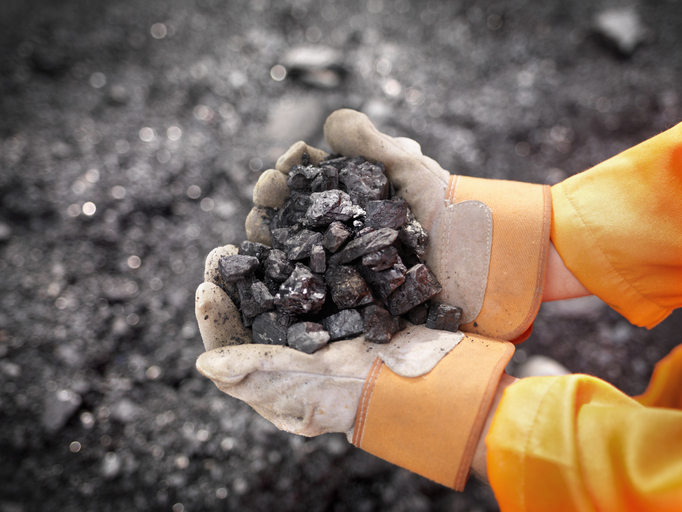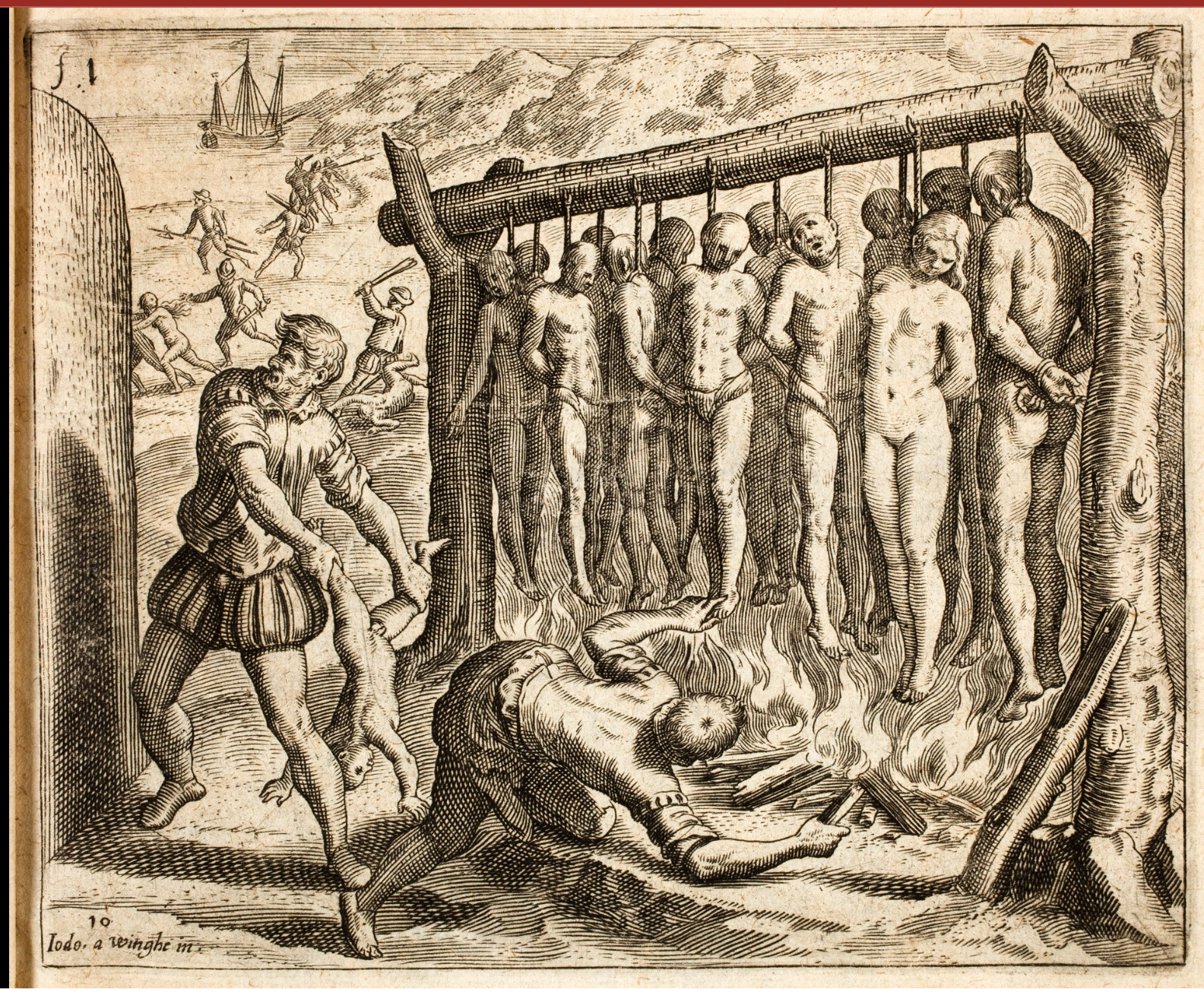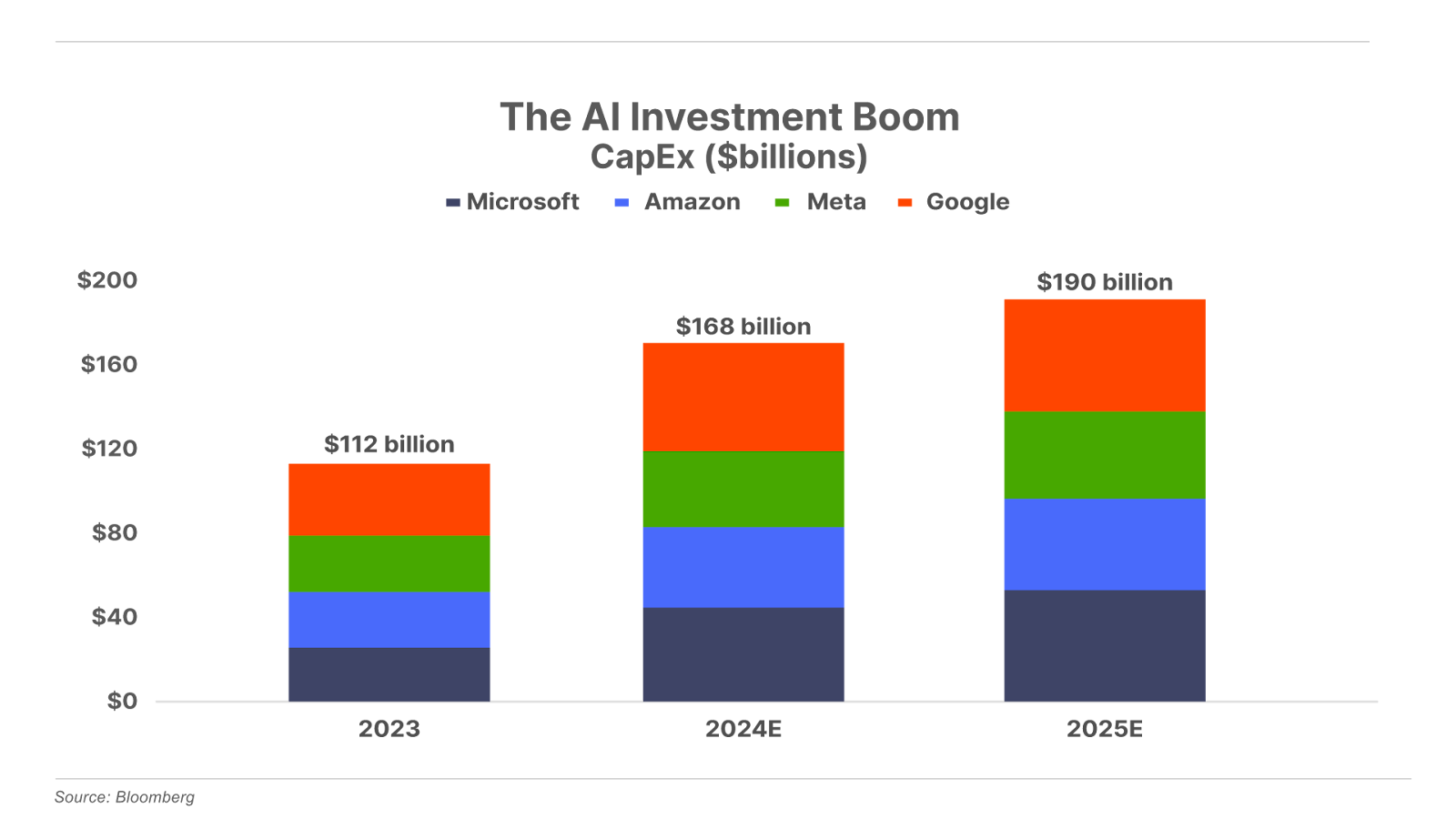
Generating the Energy for Today’s Power-Hungry Data Centers
As the U.S. Abandons Coal, This Company Sends It Overseas
| Welcome to Porter & Co.! If you’re new here, thank you for joining us… and we look forward to getting to know you better. You can email Lance, our Customer Care Concierge, at this address, with any questions you might have about your subscription… The Big Secret on Wall Street… how to navigate our website… or anything else. You can also email our “Mailbag” address at: [email protected].
Paid subscribers can also access this issue as a PDF on the “Issues & Updates” page here. |
Beginning on June 7 in The Big Secret on Wall Street, we’ve detailed the technological transformation that is driving artificial intelligence (“AI”), machine learning, chipmaking, power generation, and so much more. We are calling this story The Parallel-Processing Revolution.
In honor of Porter & Co.’s second anniversary, we have been making this vital series free to all our readers – providing a high-level view of the ongoing tech revolution, and several valuable investment ideas along the way. (However, detailed recommendations and portfolio updates have been reserved for our paid subscribers.)
This week, we conclude this series with a look at two companies that are providing the power to drive the huge energy demands of supercomputing. We are offering the upfront analysis to all readers, while details of the two companies featured are for subscribers only.
If you are not already a subscriber to The Big Secret on Wall Street, click here…
Here are links to the first five issues of the series:
- Part 1 explains how chipmaker Nvidia led the industry switch to parallel computing
- Part 2 chronicles two near-monopoly companies that power chipmaking globally
- Part 3 compares current investment opportunities with the internet boom 25 years ago
- Part 4 highlights the company that’s developing the “brains” that power The Parallel-Processing Revolution
- Part 5 explores that mania that has sent many AI stocks soaring – perhaps dangerously high
We conclude our series with Part 6, below.
Judge Jacob Hessels spent much of the time in his courtroom dozing.
But he woke up when it really mattered… that is, whenever it was time to pronounce the death sentence.
Hessels couldn’t really be blamed for taking a snooze while on duty. He was working round the clock, presiding over a seemingly endless lineup of heresy cases during the 1570s Spanish Inquisition in the Netherlands.
At the time, the Netherlands were under Spanish control… and Spain’s Catholic ruler, Philip II, had given orders to round up all the Protestants in the Dutch “Low Country” and try them as heretics. But interrogating thousands of pious men and women – whose only crime was worshiping a little differently – proved exhausting for Judge Hessels.
After a few hundred cases, the judge started nodding off during the trials, waking up at the end to rubber-stamp executions with the words “Ad patibulum!” (“To the gallows with him!”)
| The Big Secret One company featured this month is transforming itself from a domestic U.S. coal supplier into a coal exporter. While this Appalachia-based producer will enjoy a boom resulting from the parallel-processing revolution, its long-term future is further bolstered as an exporter of high-quality coal into a growing international market. |
If a Protestant was lucky, he caught Hessels between power naps – and maybe managed to get his sentence commuted to lifelong banishment, with all his worldly belongings confiscated for the benefit of the Catholic Church.
Artist and engraver Theodor de Bry was one of the “lucky” Protestants spared the gallows.
De Bry forfeited all his possessions to the Inquisitors, and was exiled to Strasburg, Germany in 1570 with life and limb intact. The penniless – but talented — De Bry got to work as soon as he landed in Germany… and before long, landed a history-altering art commission.
The project was a series of illustrations for travel books about the discovery and exploration of the New World (then, the destination of choice for gold-hungry Spanish conquistadors). De Bry’s fanciful engravings included strange gods and sea monsters… and, on every page, depictions of Spanish adventurers chopping up and torturing innocent natives.

The illustrator’s unfavorable – and realistic – portrayal of the Spanish had far-reaching consequences.
De Bry’s books found an audience across Europe, and his vivid illustrations were reprinted and used in countless other books – including a widely-circulated tome by a conscience-stricken Spanish monk, Bartolomé de las Casas, who wanted to atone for the sins his countrymen had committed in the New World. In a way, De Bry’s illustrations served as a kind of 16th-century Internet meme… a viral image that becomes a cultural touchstone.
During the same late 1500s/early 1600s time period, persecuted Protestants in several countries fought back against the Catholics…and eventually flipped the balance of power in Europe from Catholic to Protestant.
The kingdom of Spain, though, stayed stubbornly Catholic… and soon found out how it felt to be the underdog.
Protestant leaders like England’s Elizabeth I and the Netherlands’ William of Orange, along with powerful religious reformers like the French John Calvin and the German Martin Luther, launched a series of highly effective smear campaigns against still-Catholic Spain.
Fueled by recent memories of the Inquisition, and of course, by de Bry’s lurid engravings, a popular belief took root: the idea that the Spaniards were cruel… dastardly… violent… and just a little bit worse than the rest of Europe.
That was the start of the “Black Legend” of Spain.
Black Legends and Black Diamonds
The Spanish “Black Legend” was bigger than any single propaganda campaign or smear tactic. Over many decades and across the continent – and world – it survived as a “big idea” that the country of Spain was, somehow, a global menace.
As Spanish historian Julián Juderías explained in his 1914 book The Black Legend and the Historical Truth (the first place we find the term “Black Legend” officially used), the Legend is “the systematic ignorance… of all that is favorable and beautiful in the various manifestations of culture and art, the accusations that in every era have been flung against Spain.”
The Legend has taken many forms… subtle and not so subtle… over the last few centuries. (It’s a poorly-hidden source for a lot of the woke “anti-Columbus” drivel that young people spout today.) At its roots, the Black Legend was a collusion – by powerful political groups and interests – to demonize a country that, while not perfect, really didn’t deserve that level of vitriol.
Like all big stories, the Black Legend is a complicated one.
For one thing, there’s more than a grain of truth in it. The Spaniards – while not the worst villains in European history by far – did torture their opponents during the Inquisition. They also undeniably committed genocide in the Americas – it’s estimated that about eight million natives died, both from wartime violence and communicable diseases, during the three hundred years of Spanish colonization.
But as Juderías wrote… there’s much that’s “favorable and beautiful” in Spanish history, too.
The Black Legend is only one part of the complex story of Spain – and centuries of repetition have drowned out much of the other side… the good side… which has a legitimate claim to truth as well.
For instance, Spanish priests (fueled by the belief that they were doing the Lord’s work) toiled tirelessly over the three hundred years of the Spanish Colonial period to bring Native Americans schools, churches, and hospitals. Spanish and Native populations frequently intermarried during that time. And – as a direct result of de las Casas’ confessional writings – the Spanish government instituted a remarkable piece of humanitarian legislature, the Laws of Burgos, in 1512, ensuring that the conquistadors would treat the natives fairly, as free people, with cottages and land of their own.
In the end, there’s a lot of gray in the Black Legend. And we would be unfair to Spain – and to history – if we accepted this massive defamation campaign at face value.
Right now, it’s fair to say that we are in the midst of the creation of a new “Black Legend” for the modern age. We’re seeing a loosely coordinated group of political powers determined to torpedo an imperfect – but still valuable, still useful – resource.
I’m talking, of course, about coal – which, appropriately enough, sometimes goes by the name “black diamonds.” And about the “black legend” that’s sprung up around it – not due to warring religious kingdoms, but to an even more fanatic group of zealots: climate change warriors.
That includes Barack Obama, who stated openly in his 2008 campaign that he wanted to “bankrupt” the coal industry – and followed through with a series of stringent actions to shut down coal mines and destroy jobs in the coal sector; President Joe Biden, who’s continuing the war on coal with punitive EPA regulations designed to hamstring crucial coal mines in Montana’s Powder River Basin; and environmental activist organizations like 350.org, who openly admit
that they aim to conduct “smear campaigns” and to take away the industry’s “social license to operate.” All in favor of debunked green energy projects that are never going to work.
Coal is dirty energy, as we’ve written before. But it’s also a vital part of American industry, and a significant segment of the country’s energy backbone, responsible for 16% of power in the U.S., and 37% worldwide. And, especially now that we need massive doses of raw power to fuel AI’s increasing energy demands… coal is not going away.
We owe it to ourselves not to believe the reductive myth-making of the climate-change elite. While nothing can whitewash the impact of coal pollution, we can’t afford to ignore all the good things coal has done for the world, either.
In this issue, we’ll show how one top-tier U.S. coal producer has thrived in recent years, despite the best efforts of American policymakers to bankrupt the industry.
Satisfying the Power Needs of Supercomputing
America’s largest technology companies are competing in a capex arms race to overhaul their data centers for the new age of parallel processing.
This data center reboot comes as the explosion in artificial-intelligence (“AI”) computing requires a shift from the previous regime of x86-based serial computing architectures to the new era of GPU-powered parallel processors – GPUs (graphics processing units) can carry out ten of thousands of operations at once with a processing capacity that is exponentially greater than previous chips. These high-powered GPUs will consume vast amounts of additional energy versus the traditional x86 processors of the past.
Before the parallel-computing revolution took hold, the typical rack of servers in a data center required about three to five kilowatts (kw) of power. These devices run 24 hours a day, consuming 72 to 120 kilowatt-hours of electricity each day, or about three times as much as an average U.S. household. In today’s cutting-edge data centers that run on high-powered Nvidia GPUs, this number has increased 10-fold to roughly 30 kw to 50 kw per rack. As a result, the GPU-based data centers of today’s parallel-computing revolution consume enough electricity to power 50,000 homes.
The Magnificent Four mega-cap U.S. tech companies – Alphabet (GOOG), Amazon (AMZN), Meta (META), and Microsoft (MSFT) – are racing to overhaul their roughly 600 U.S. data centers with the latest energy-hungry Nvidia GPUs. Together, these companies will spend a record $168 billion on capital expenditures this year, up 50% from 2023, with the majority going toward data center investments. And that’s only the beginning of a $1 trillion investment boom that analysts expect U.S. companies will direct toward new data center development over the next five years.

The Electric Power Research Institute estimates that data centers will consume roughly 9% of U.S. power generation by 2030 – more than double today’s 4%. Combined with the rising power demand from electric vehicles, this surge in demand will strain America’s aging power grid. Indeed, it’s already happening.
U.S. policy-makers plan to fulfill America’s growing electricity needs with “renewable” power sources like wind and solar. The federal government currently aims to make 80% of America’s electric grid powered by renewable sources by 2030, up from just over 20% currently. This would require solar and wind power to reach a combined output of 6.8 trillion kwh of annual generation capacity – or a 10-fold increase over current levels – in the next five years. Even assuming the manpower and materials existed to make this happen, it would require an investment on the scale of many trillions of dollars.
Even die-hard environmental activists, like Ernest Moniz, the secretary of energy in the Obama administration, acknowledge the futility of relying on wind and solar for America’s growing power demands. At a power-industry conference in March, Moniz explained:
We’re not going to build 100 gigawatts of new renewables in a few years.
Moniz further explained that the only way to meet America’s growing electricity needs will be to rely on traditional forms of cheap and reliable power: most notably, natural gas and coal.
The challenge is that U.S. utility operators haven’t upgraded America’s power-generation capacity for the last 15 years, as electricity demand has been stagnant over that time. As a result, the hundreds of billions of dollars pouring into new data center construction is rapidly outpacing the growth in new power generation capacity. Commercial real estate firm CBRE recently noted that the lack of power supply has delayed construction of data centers by two to six years.
This all adds up to a looming energy crunch. But Bloomberg reports because of increased demand, the push to shutdown coal plants is slowing down. In fact, the closing of more than 20 facilities from Kentucky to North Dakota that were set to retire between 2022 and 2028 has been delayed.
In this issue, we’ll show how one U.S. coal producer is poised to profit from supplying the critical power fueling this computing revolution.
We’ll also highlight another big winner from the $1 trillion data center buildout – a company that makes critical infrastructure for handling the massive power demands of today’s energy-hungry data centers.
A Highly Overlooked Parallel-Computing Play
This content is only available for paid members.
If you are interested in joining Porter & Co. either click the button below now or call our Customer Care team at 888-610-8895.